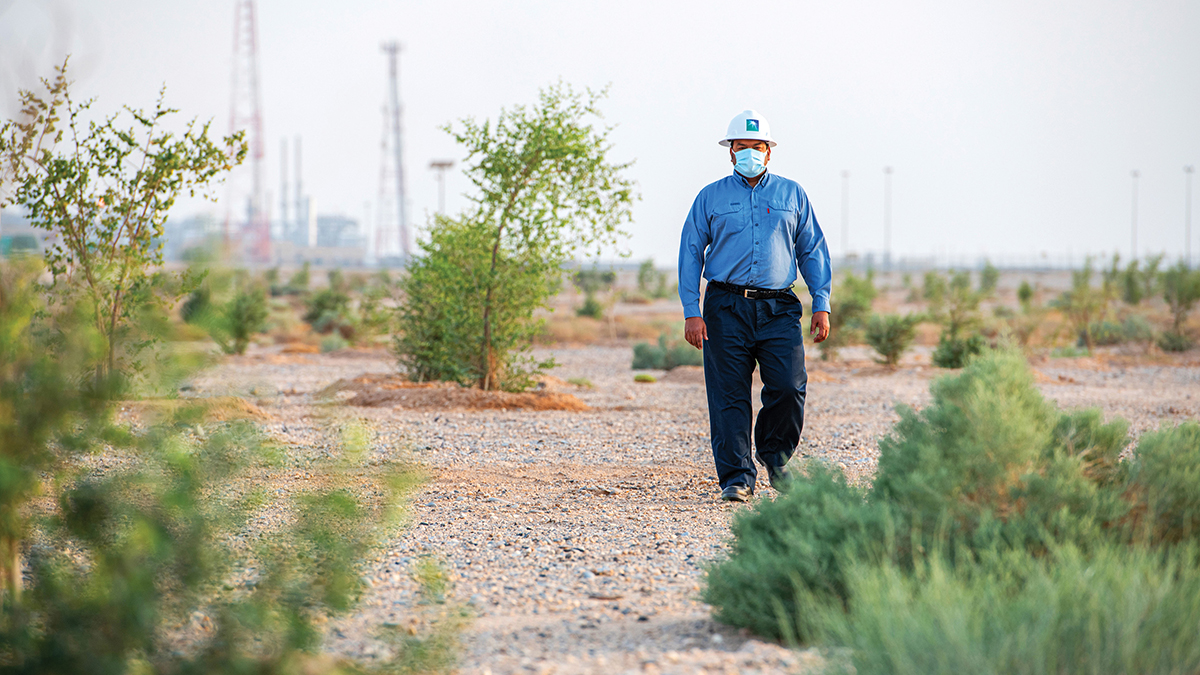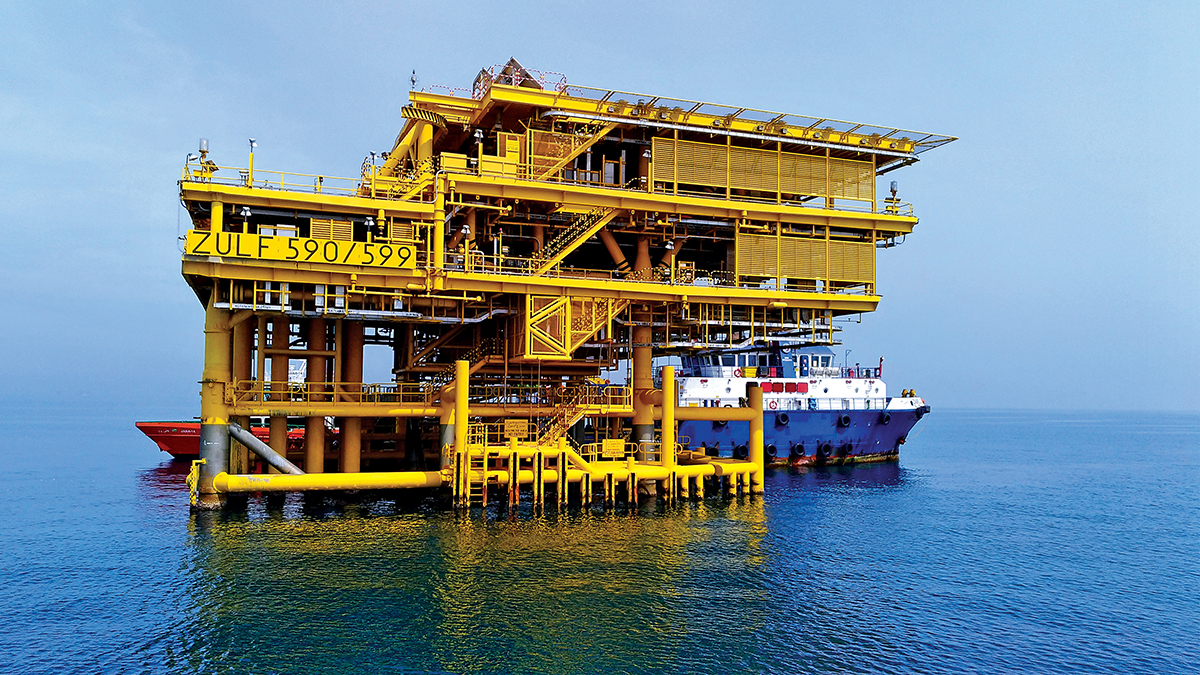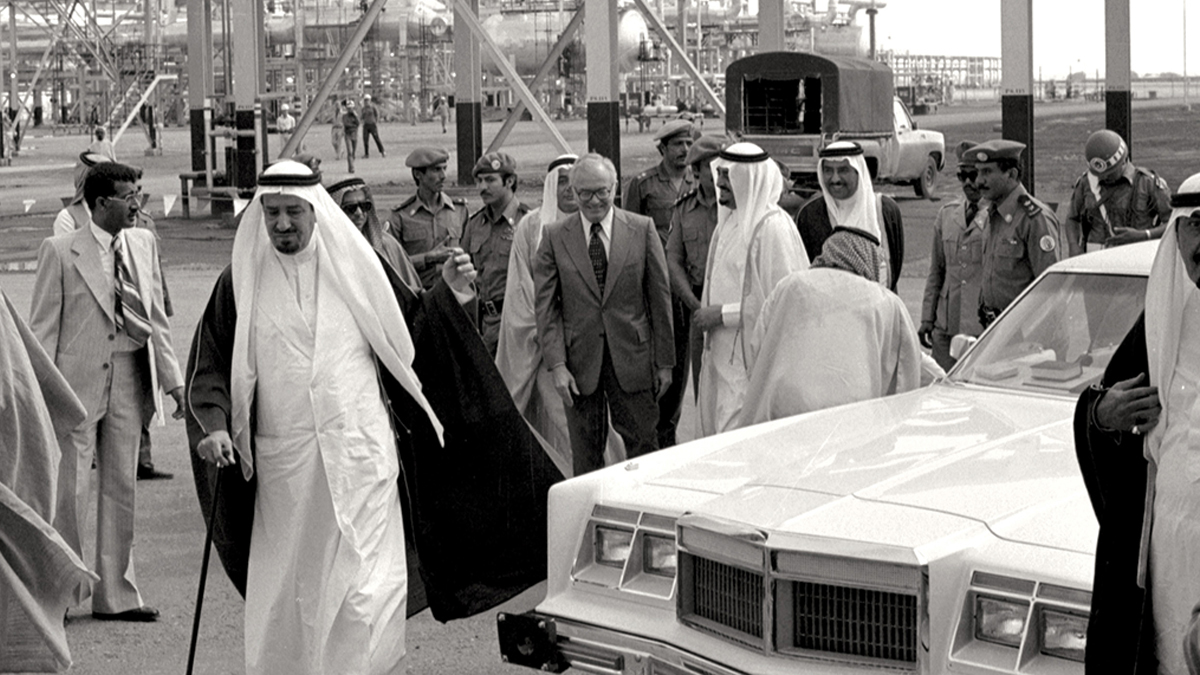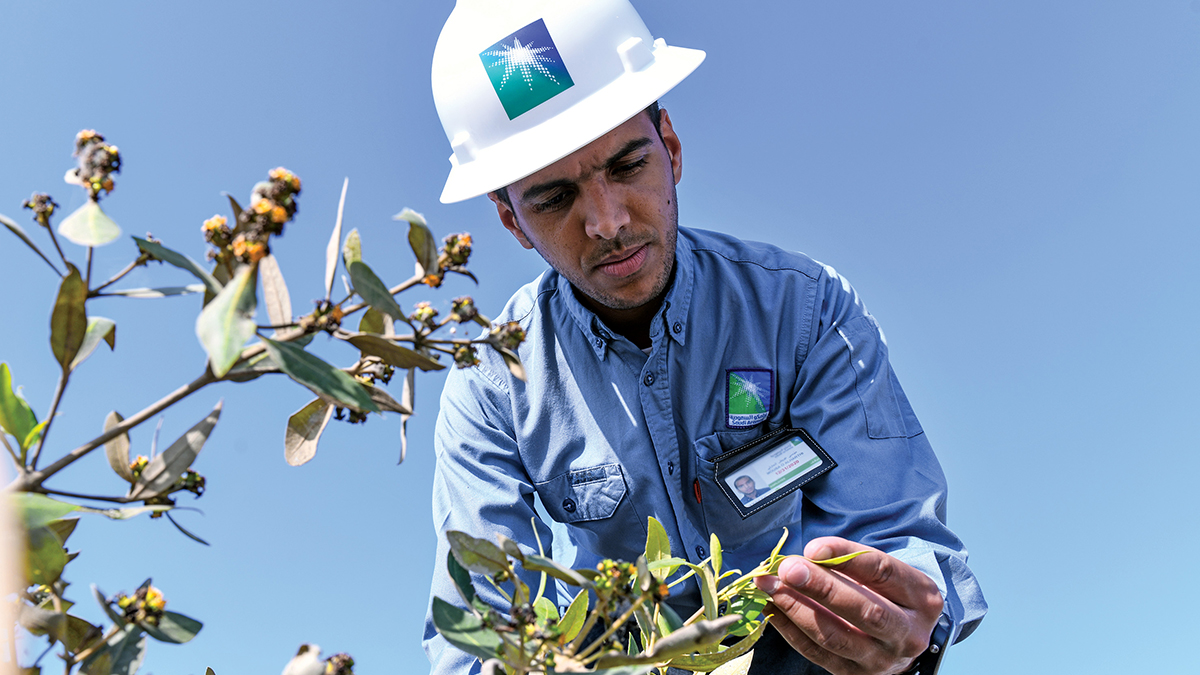Sustainability
Toward a Sustainable Future

Global September 22, 2021 - By
Marching in step with the Kingdom’s green initiatives.
Aramco believes in the importance of a low carbon energy future.
We are part of the solution toward the world’s energy transition, using the 4Rs of the circular carbon economy, and planting for the future.
Energy transition
We believe that oil and gas, supported by technological innovations, will prove to be essential in achieving an orderly global energy transition.
For four decades Aramco has coexisted renewables alongside oil and gas operations.
Aramco’s renewables journey began in the 1980s when 10.9 volt photovoltaic panels were installed for a remote cathodic protection station at Shedgum.
The company is part of the Kingdom’s commitment to deploy a variety of low-carbon energy solutions in Saudi Arabia, and last month became a 30% investor to build the Kingdom’s largest solar plant, the SAR 3.4 billion 1,500 MW Sudair Solar PV project.
Planet’s lightest, most abundant element
Hydrogen, releasing no greenhouse gas emissions when combusted, is gaining traction as an alternative fuel source, and Aramco is exploring the blue hydrogen market.
Last year Aramco made the world’s first commercial blue ammonia shipment to Japan, demonstrating the possibilities of ammonia as a decarbonized energy commodity.
Aramco’s significant processing, pipeline and refining infrastructure, and expertise in carbon capture means the company is well placed to contribute feasibly to a hydrogen-powered low carbon economy.

Circular economy
Most economies discard raw materials as waste after use. The circular economic system uses resources again and again.
A circular carbon economy adds a focus on ‘removing carbon’ to the core circular elements of ‘reduce, reuse and recycle.’
Saudi Arabia and Aramco have adopted the circular carbon economy framework as a way to reduce their carbon footprints.
The circular carbon economy concept was presented by the Kingdom to the Group of 20 (G20) leaders last year, who endorsed it as a strategy to combat climate change globally.
Design is a key part of the circular economy and Aramco’s standard offshore wellhead design can be used again and again without replication of engineering.
Master Gas System
In the 1970s, instead of flaring associated natural gas, Aramco started to capture it.
The Master Gas System, an extensive network of pipelines collecting gas for commercial use and power generation, drastically reduced Aramco’s upstream flaring rates.
In 1977, King Khalid bin Abdulaziz Al Saud inaugurated the first facility constructed for the Master Gas System, Berri Gas Plant.

Planting the future
HRH Prince Mohammed bin Salman Al-Saud launched the Green Saudi Initiative, and Green Middle East initiative this year, noting that, as one of the leading global oil producers, the Kingdom fully showcases its aim in advancing the fight against the climate crisis.
So far, across the Kingdom, Aramco has planted 1 million native trees, and plans to have planted more than 100 million trees by 2030.
Mangrove planting
In 1993, Aramco planted its first mangrove seedlings as part of a study commissioned with the Research Institute at King Fahd University of Petroleum and Minerals in an effort to re-establish mangrove forests along the shores of the Arabian Gulf.
The company also partnered with the National Commission for Wildlife Conservation and Development as well as the Ministry of Agriculture and Fisheries to determine whether mangroves could be successfully restored, and now the shores have well-established mangrove forests.
Today, Aramco has planted more than 6 million mangrove trees, and environmental engineer Mousa O. Alharthi says the trees not only restore the Kingdom’s natural ecosystem and wildlife habitats, but also contribute to the capture and storage of carbon dioxide.

Fighting desertification with nature
Haradh gas plant sits on Wadi Sahba’s age-old banks, and environmental coordinator AbdulRahman O. Lashkar is one of the team member's working to reestablish an inspiring 250,000-m2 area of environmental restoration to the remote operating site.
In the plant’s distant shadow survives three crucial pockets of native Saudi Arabian biodiversity, collectively covering 8.3 km2, and seeds from the native biodiversity are aiding with Haradh’s biodiversity restoration, where 16 species of native and endangered shrubs grow.
The new trees and plants at Haradh also bring business benefits, such as sequestering carbon, reducing sand blowing into the plant, and creating an attractive area for our employees.



